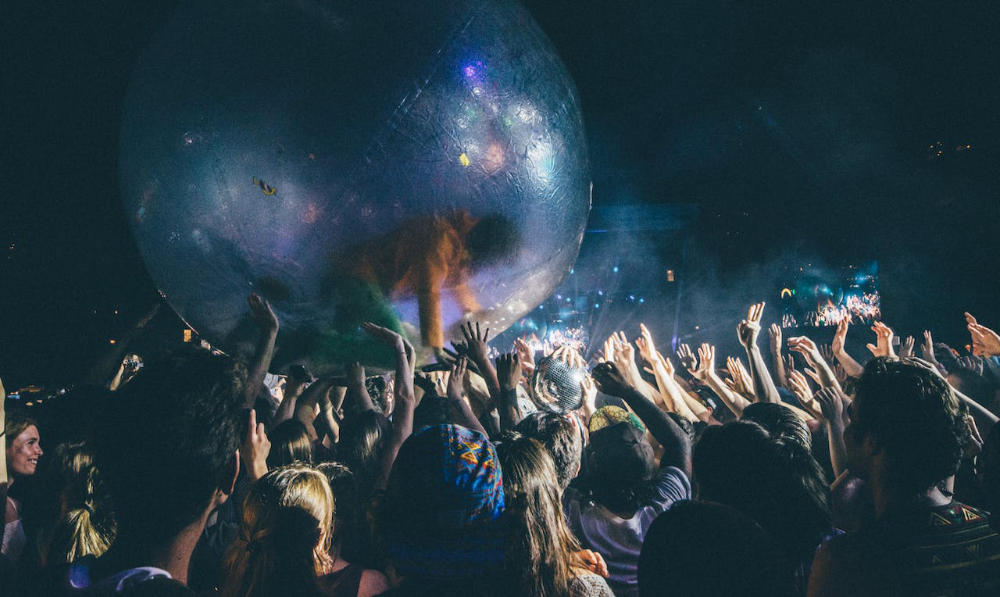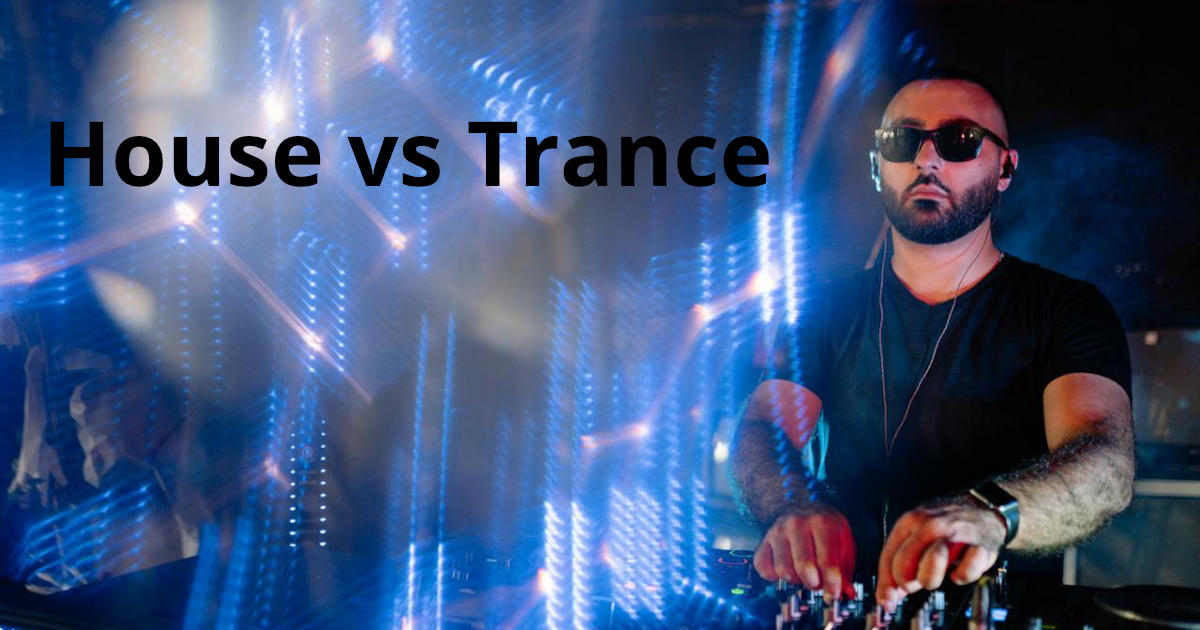Estimated reading time: 9 minutes
Ah, the age-old debate between house and trance. It’s like deciding between pizza and burgers, both have their distinct flavors and will leave you wanting more! But to embark upon the journey of the differences, first let’s uncover the layers of both genres, shall we?
Table of contents
Definition of House Music
Eeny, meeny, miny, moe, Which genre will make you glow? Let’s start with house music! Now think of house music as your close mate, the one you turn to when you need a real pick-me-up. It’s the kind of tune that your feet can’t help but grove to, regardless of the circumstances.
House music essentially is a genre born in the hearty locales of Chicago in the early 1980s. Picture this, it’s rhythmic, upbeat, and has repetitive beats – the kind that makes you want to strut your stuff on the dance floor. It’s like a sonic palette that emphasizes rhythm over melody, with pulsating bass lines and vibrant percussion.
Definition of Trance Music
Moving on, imagine trance music as a mystic sage, taking you on a whirlwind journey, soaring heights, depths of emotion, and all that jazz. Trance music originated during the late 1980s in Germany (bet you didn’t see that coming!), with a more melodic and repetitive nature – the kind that transcends you into a different world!
Think extended build-ups, intense breakdowns, and climactic crescendos. Trance is typically marked by a tempo ranging from 125 to 150 beats per minute (BPM). It’s like a symphony where the melody takes you on a wild boat ride while the rhythm acts as the water, carrying you along, but it’s the melody that takes centre stage.
History of House Music
Origins of the Genre
Bet you’re curious about how house music “house”-d itself in our hearts (see what I did there?). Well, thank goodness for the godfather of house music, DJ Frankie Knuckles. He mixed old disco classics and new Eurobeat pop and did some wizardry on his electronic drum machine. The end product? None other than our good old friend, house music.
Development and Popularity
House music quickly spread its wings from Chicago to Detroit and New York, and then global. It’s like that goofy kid in school who turned out to be uber-popular because, well, everyone just adored his charming eccentricities.
Subgenres of House Music
Now house music is no one-trick pony. It has a cocktail of subgenres that hit different, like deep house, tech house, electro house and let’s not forget our party-starter, progressive house. So no matter what your music taste-buds crave, house music has got you covered!
History of Trance Music
Origins of the Genre
Now what about trance? Who do we have to thank for this hypnotic genre? Our hat tips off to Mr. Paul van Dyk, the father of trance music. Imagine a scene from a Berlin club in the 1990s, where Mr. van Dyk is spinning vinyl records, journeying audience through his experimental music, et voila! Trance music was born.
Development and Popularity
Like a rising phoenix, trance’s popularity saw a meteoric rise from Europe and took a firm hold across the pond in America. From sought-after music festivals to topping the Billboard Dance/Electronic Albums chart, trance has largely dominated the global music scene.
Subgenres of Trance Music
Not to be outdone by house, trance split itself into various subgenres, each having its own unique charm. We have the epic trance, uplifting trance, progressive trance, and my favourite, the psychedelic or psytrance. It’s like the candy store of music, there’s something for everyone!

Differences Between House and Trance
Now, let’s rumble! What sets house and trance apart?
Types of Sounds Used
House music likes to use more natural and groovy sounds, with its drums, snares, and high-hat cymbals. Trance, on the other hand, is about layered synth, creating a mystical and atmospheric texture, the kind that makes you feel like you’re floating.
Beats Per Minute
House typically clocks in at around 120-130 BPM, a comfortable jog through the sonic landscape. However, trance picks up the pace, ranging from 125 to 150 BPM, like a wild, heart-thumping sprint.
- Trance vs Techno: Exploring the Distinctive Sounds of Trance and Techno
- House vs Techno: Unraveling the Differences Between House and Techno Music
- Rave Music Genre Unveiled: Your Ultimate Groove Guide
Structure & Melody
House prefers to keep things simple with a verse-chorus structure and the repetition of key themes. Trance follows a different path – think extended introductions, a middle plateau, followed by a grand climax and beautiful ending.
Catchiness Factor
Well, I must say both genres are catchy but house with its groovy and repetitive beats is known to be more immediate and club-friendly, while Trance is for those who appreciate a slow-brewed sonic feast, with its intense build-up and cathartic release.
So there we have it, folks! A toe-to-toe comparison of house and trance. Whether it’s the rhythmic charm of house or the epic crescendo of trance that makes your heart beat faster, it’s clear that both these genres have deeply diversified themselves over their existence. So next time you’re humming your favorite tune, remember, it’s always an epic battle between house and trance – a delightful war in the world of rhythms and beats.
| Aspect | House Music | Trance Music |
|---|---|---|
| Sound Elements | Natural, groovy sounds: drums, snares, | Layered synths creating atmospheric |
| high-hat cymbals | textures | |
| Beats Per Minute | 120-130 BPM | 125-150 BPM |
| Structure & Melody | Emphasizes rhythm, repetitive themes, | Extended build-ups, middle plateaus, |
| verse-chorus structure | grand climaxes, and emotive endings | |
| Atmosphere | Immediate, club-friendly | Mesmerizing, slow-brewed sonic journey |
| Emotional Impact | Groovy and catchy | Ethereal, hypnotic, and emotionally |
| evocative | ||
| Typical Settings | Dance floors, clubs | Music festivals, deep listening settings |
| Subgenres | Deep house, tech house, electro house, | Epic trance, uplifting trance, |
| progressive house | progressive trance, psytrance |
Be sure to check out my article “house vs edm“. In it, we look at the differences between these two genres.
Producing House and Trance Music
Creating captivating house or trance tracks often involves utilizing a variety of production techniques and resources. A fundamental aspect of music production in these genres revolves around the use of samples—snippets of pre-recorded sounds or loops that producers incorporate into their compositions.
Trance Samples: Crafting Ethereal Soundscapes
Trance music often relies on ethereal textures and hypnotic melodies. Producers in the trance genre frequently utilize Trance Samples, which encompass a diverse range of elements such as dreamy pads, soaring leads, arpeggiated sequences, and atmospheric effects. These samples aid in constructing the intricate layers and emotional depth characteristic of trance music. Producers often manipulate these samples through effects and processing to create a sense of otherworldly immersion.
House Sample Packs: Building Infectious Rhythms
In contrast, house music places a strong emphasis on infectious rhythms and grooves. Producers crafting house tracks delve into House Sample Packs, which include drum loops, basslines, vocal chops, and percussion elements. These packs provide a foundation for the rhythmic drive inherent in house music. They serve as building blocks, allowing producers to construct dynamic beats and catchy hooks that propel listeners to the dance floor.
Both Trance Samples and House Sample Packs serve as valuable tools for producers, offering a vast array of sounds and textures that contribute to the distinctive qualities of each genre. However, the artistry lies not only in using these samples but also in creatively manipulating and integrating them into compositions to craft unique sonic landscapes and evoke emotional responses from the audience.
Whether weaving together transcendent melodies in trance or sculpting infectious rhythms in house, the utilization of these sample resources forms a crucial part of the intricate production process, allowing producers to sculpt their sonic visions and shape the distinct flavors that define house and trance music.
Exploring the Trance Realm: Best Albums and Timeless Tracks
In my other articles, I delve deeper into the enchanting world of trance music. Discover the best trance albums, where I highlight the most influential and mesmerizing albums that have shaped the genre’s landscape.
Additionally, explore the nostalgia of the ’90s with the best 90s trance songs, revisiting timeless tracks that defined an era and continue to captivate audiences with their euphoric melodies.
For an ultimate journey through trance’s evolution, explore the best trance songs of all time, celebrating tracks that have stood the test of time, leaving an indelible mark on the genre’s history and captivating listeners across generations.
Conclusion: Embracing Diversity in Musical Harmony
House and trance music stand as vibrant expressions of diverse musical journeys. House’s infectious rhythms and trance’s ethereal melodies cater to distinct tastes, inviting listeners to embrace their unique sonic experiences. Rather than pitting one against the other, appreciating the rich tapestry of these genres celebrates the boundless creativity within music.
Whether it’s the immediate allure of house or the hypnotic allure of trance, both genres weave a spell that transcends boundaries and unites us through the universal language of music. The delightful clash between these musical styles reminds us that in diversity lies the beauty of our musical world—a world where beats and rhythms spark joy and connections, enriching our lives in myriad ways.
In the end, our preference for house or trance merely reflects the diverse spectrum of musical taste, but what truly matters is the collective embrace of the rhythms and melodies that make our hearts dance and souls soar.
FAQ
House and trance differ significantly. House emphasizes rhythm with groovy beats, while trance focuses on melodic build-ups and climaxes, creating a more ethereal journey through layered synths and emotive tones.
Trance often builds with extended melodic climaxes, offering a hypnotic journey. Progressive house, while melodic, features more subtle progressions and evolves steadily without intense climactic peaks like trance.
House tends to have groovier, soulful rhythms with repetitive beats, while techno leans towards a darker, industrial sound with minimalistic yet driving beats and emphasis on electronic textures.
House music typically features repetitive beats, soulful vocals, and a focus on rhythm over melody. It often encourages movement and dancing, with a vibrant and energetic feel.
Tiesto, renowned for his diverse musical journey, initially gained fame in trance but later transitioned to a more versatile sound, incorporating elements of both trance and house in his music, showcasing a blend of genres.
